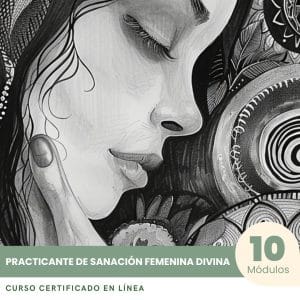6.5 – Creativity and Improvisation Skills

Creativity and improvisation skills are essential assets for a Laughter Therapist. In his practice, he is constantly inventing, adapting, and rebounding depending on the situations and audiences encountered. Far from simply applying ready-made recipes, he draws from his imagination to create original and impactful custom interventions. His ability to improvise allows him to handle the unexpected with ease and seize the opportunities that arise in the moment.
The creativity of the Laughter Therapist is first expressed in the design of his workshops. For each intervention, he imagines a guiding thread, a narrative framework that will give meaning and coherence to the sequence of exercises. He creates playful and offbeat thematic universes, which will promote letting go and stimulate the participants’ imagination. For example, he can create a workshop around travel, inviting participants to explore different emotional landscapes through laughter and postures inspired by various cultures.
To nourish his creativity, the Laughter Therapist cultivates insatiable curiosity. He is interested in various fields, from art to science, including philosophy and spirituality. He keeps informed of the latest advances in the field of neuroscience, positive psychology, complementary therapies. He explores different bodily and emotional approaches, such as yoga, meditation, dance, theater. All these sources of inspiration feed his toolbox and enrich his practice.
In a corporate workshop, the Laughter Therapist notices that the participants are having a hard time relaxing, preoccupied with an imminent deadline. rather than insisting on his planned program, he improvises an exercise of “office laughter”. He invites participants to laugh at their computers, their phones, their piles of paperwork. Quickly, laughter erupts, easing built-up tensions. The practitioner rebounds by proposing a collective challenge: to imagine the unusual applications of laughter at work. Ideas burst forth, becoming more and more zany. The atmosphere relaxes, team cohesion strengthens. By showing creativity and flexibility, the Laughter Therapist has turned a stressful situation into an opportunity for letting go and complicity.
Improvisation is a key skill for dealing with unforeseen situations. Despite meticulous preparation, the Laughter Therapist knows that each workshop is a unique adventure, where anything can happen. A participant who arrives late, an exercise that falls flat, an unexpected emotion that emerges… These are all challenges that require the ability to adapt in real time. The practitioner learns to welcome these unforeseen events not as obstacles, but as springboards to explore new directions.
To hone his improvisation skills, the Laughter Therapist regularly practices. He participates in improvisational theater workshops, clown workshops, stand-up comedy. He learns to connect to his intuition, to follow his creative impulses in the present moment. He experiments with different styles, from burlesque to poetic and absurd. The more he expands his expressive palette, the more confident and reactive he becomes in the face of unexpected situations.
During an intervention in a nursing home, a resident with Alzheimer’s disease suddenly starts to sing a song from her childhood. The Laughter Therapist seizes this opportunity. He invites the group to hum along with her, adding humorous lyrics. Soon, everyone is singing at the top of their lungs, amid bursts of laughter and joyful memories. The emotion is palpable. By following his intuition and adapting to the moment, the practitioner has turned an unexpected event into a shared moment of grace.
Creativity and improvisation are muscles that can be trained. The Laughter Therapist maintains his mental flexibility through regular practice. He engages in creativity exercises, such as imagining a new type of laugh every day, inventing a joke, finding ten unusual uses for an object. He cultivates his sense of humor, his ability to laugh at himself and at incongruous situations. The more he stimulates his creativity in his daily life, the more it becomes a natural reflex in his professional practice.
But creativity and improvisation are not ends in themselves. They serve a bigger purpose: to create the optimal conditions for the benefits of laughter to unfold. The Laughter Therapist does not seek to impress with his originality or virtuosity. He uses his creative skills with discernment, adapting to the needs and abilities of the participants. His goal is to create a space of trust and freedom, where everyone can experience the power of laughter at their own pace.
During a workshop for hospitalized children, the Laather Therapist had planned a series of dynamic exercises. But upon arriving in the room, he realizes the little patients are tired, on drips. Instead of stubbornly sticking to his program, he improvises a gentle session. With his puppet Rigolette, he invents a story full of tenderness and wittiness. The children are captivated, they laugh softly, forgetting their pain for a moment. By showing creativity and empathy, the practitioner has been able to adapt his intervention to bring a little lightness into a difficult context.
Creativity and improvisation are the wings of the Laughter Therapist. They allow him to adapt to each situation, constantly renew his interventions, surprise and move. But they are not a solitary performance. They invite participants to also become actors and creators of their own well-being. By improvising together, imagining new possibilities, the practitioner and participants co-create a unique and jubilant experience, where laughter becomes an art of living and growing together.
Key points:
1. Creativity and improvisation are essential skills for the Laughter Therapist, allowing him to adapt his interventions to different audiences and situations.
2. The Laughter Therapist designs original and coherent workshops, creating playful and offbeat thematic universes to promote letting go and stimulate the imagination of participants.
3. To nourish his creativity, the Laughter Therapist cultivates insatiable curiosity and is inspired by various fields such as art, science, philosophy, and spirituality.
4. Improvisation allows the Laughter Therapist to handle the unexpected with ease and turn stressful situations into opportunities for letting go and complicity.
5. To develop his improvisation skills, the Laughter Therapist regularly practices by participating in improvisational theater workshops, clown or stand-up comedy.
6. Creativity and improvisation serve a larger purpose: to create the optimal conditions for the benefits of laughter to unfold, by adapting to the needs and abilities of the participants.
7. By showing creativity and empathy, the Laughter Therapist can bring lightness even in difficult contexts, such as during interventions with hospitalized children.
8. Creativity and improvisation invite participants to become actors and creators of their own well-being, co-creating a unique and jubilant experience where laughter becomes an art of living and growing together.
👉 To download docx (Editable) file click here : Click here
👉 To download PDF file click here : Click here
👉 To download MP3 file click here : Click here




















































































